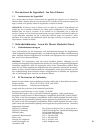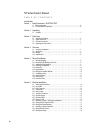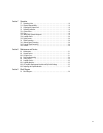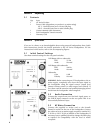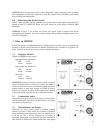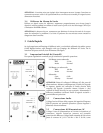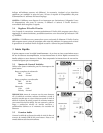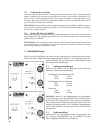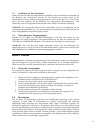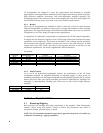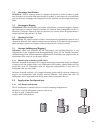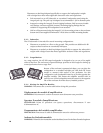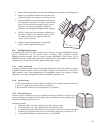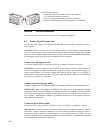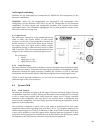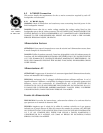
3.3 Anschluss an Das Stromnetz
Stecken Sie das eine Ende des mitgelieferten Netzkabels in die Neutrik PowerCon Buchse auf
der Rückseite des Latsprechers. Stecken Sie den Stecker am anderen Ende in die
Netzsteckdose, die eine nominale Netzspannung von 230 V 50 Hz oder 115 V 50 Hz liefert
(muss mit den Angaben auf der Rückseite des Lautsprechers übereinstimmen). Falls
notwendig, kann ein zugelassner Elektrobetrieb einen anderen Netzstecker anbringen.
VORSICHT: Der Lautsprecher besitzt keinen Netzschalter. Wenn der Lautsprecher an die
Netzspannung angeschlossen ist, ist der Lautsprecher im Betriebszustand und gibt alle an
seiner Eingangsbuchse aliegenden Signale wieder.
3.4 Einstellung des Ausgangspegels
Schicken Sie ein Signal mit normalem Betriebspegel in die Box und drehen Sie den
Pegelregler der Quelle langsam bis zum gewünschten Wert auf, aber nur maximal bis die
CLIP und/oder LIMITER LED ufleuchtet. Nun nehmen Sie den Pegel ein wenig zurück.
VORSICHT: Wenn die Box kein Signal wiedergibt, drehen Sie den Pegelregler der
Signalquelle ganz zu, bevor Sie sich an die Fehlersuche machen. Damit werden extrem laute
und möglicherweise schädliche Lutsprecherausgangspegel vermieden.
Section 4 Overview
This loudspeaker is intended for professional use. The construction, components, and hardware
have been designed to provide robust, reliable performance for its intended application.
Please ensure that you fully understand proper installation and operation before use.
4.1 Using the Loudspeaker
You will need to perform the following general tasks to properly put the loudspeaker into
service. The details for each task are provided in this manual.
1. Design and install a rigging or mounting system to support the loudspeaker in its
intended location and aimed in the desired direction.
2. Connect a line level audio signal to the loudspeaker.
3. Connect the loudspeaker to an ac mains supply as specified for the particular model.
4. Set-up and adjust system gain, signal processing, and limiting, as needed to
maximize the loudspeaker's performance.
5. Provide training to operate the loudspeaker within its limits.
6. Provide regular inspection and maintenance to maintain the integrity of the
installation and the performance of the loudspeaker system.
4.2 Description
The NT Series of loudspeakers represents true breakthrough technology with Gunness
Focusing™. In basic form, NT loudspeakers are compact, self-powered, and extremely
lightweight while providing the exceptionally high output capabilities required for
professional applications. However, to complement these features, new DSP (digital signal
processing) technology corrects inherent problems with compression driver phase plugs and
horns as well as the LF drivers. This processing is called Gunness Focusing™ after its inventor
David Gunness, EAW's Director of R&D. Gunness Focusing™, along with the highest quality
amplification, affords sonic performance comparable to the highest quality, direct radiating,
studio monitors but at much higher output levels.
7



